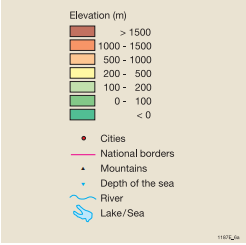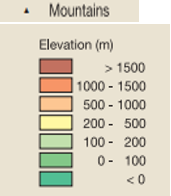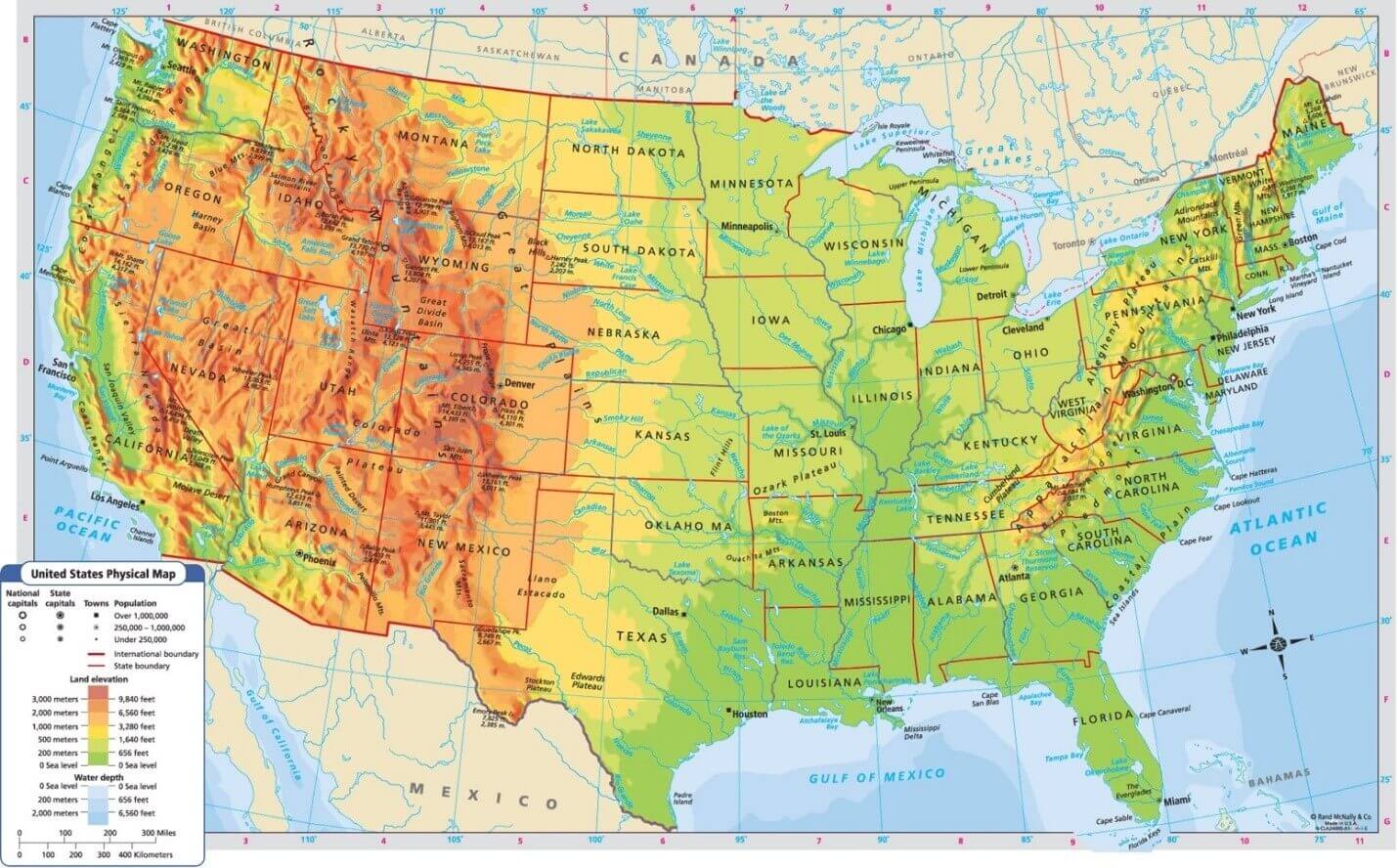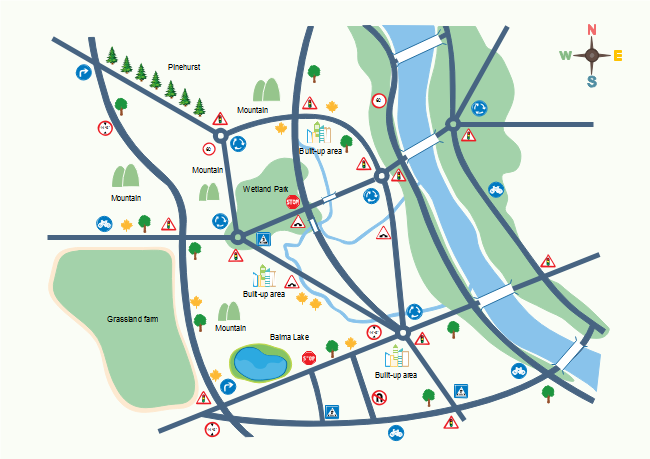Physical maps are essential tools commonly encountered in geography classes and travel planning. They utilize color gradients to represent elevation changes, clearly displaying the topography of geographical areas. Continue reading to gain comprehensive knowledge about physical maps and their applications.
Part 1: What is a Physical Map
A physical map accurately represents and displays the natural physical features of a terrain in two-dimensional format. These maps are specifically designed to make Earth's natural landscape features clearly visible and easily interpretable. Color gradients and detailed keys provide essential context to enhance the map's readability and informational value.
Part 2: Why Choose Physical Maps?
Physical maps comprehensively replicate visual terrain information, clearly displaying topographical features even in two-dimensional format. Through strategic color usage and specialized keys, physical maps serve as the optimal resource for terrain understanding when using paper maps. Additionally, these maps highlight elevation variations, important borders, water bodies, and desert regions, making them invaluable for geological studies and geographical analysis.
Advantages
- Symbolic Representation: Physical maps provide symbolic representation of Earth's natural features. While connected to political maps, they primarily focus on displaying landforms to enhance terrain understanding.
- Enhanced Navigation: These maps facilitate superior navigation for land and sea travel by providing clear visual representation of intended routes and courses.
- High-Detail Depiction: Physical maps offer the highest degree of detailed pictorial representation of topological features compared to other map types.
- Comprehensive Overview: They effectively highlight mountains, oceans, and other significant features on Earth's surface, providing valuable overviews of landmarks and water bodies.
Disadvantages
- Limited Scale Visibility: The primary limitation involves clarity reduction when viewing larger areas, as landmarks can become congested and challenging to interpret at expanded scales.
Create Professional Maps for Your Next Adventure!
EdrawMax Map Software enables creation of interactive map drawings with easy-to-edit templates. Simplify navigation and enhance your travel experience.
Part 3: When to Use Physical Maps
Physical maps display geographical features, making them ideal for identifying deserts, plains, mountains, and water bodies. When traveling and needing comprehensive terrain knowledge, physical maps provide essential information.
Enhanced physical map versions may also display rainfall patterns and temperature data. These specialized maps enable various calculations and help identify ideal destinations based on preferred weather conditions.
Related Resource: How to Use Weather Clipart
Part 4: Primary Users of Physical Maps
- Educators: Physical maps are extensively used in educational settings to help students understand geographical terrain features during geography lessons.
- Pilots: Aviation professionals utilize physical maps for long-distance navigation, particularly in mountainous regions, providing better geographical understanding. They also serve as emergency resources for identifying suitable landing areas.
- Geologists: Geological researchers employ physical maps to identify and map research locations, as these maps clearly display physical features essential for geological studies.
Part 5: How to Read a Physical Map
Physical maps include a key that enables proper interpretation and understanding of the presented information.


Standard physical maps position keys horizontally at the bottom or vertically along the sides. The crucial step involves understanding symbol meanings and representations.
• Elevation and Height

Elevation representation forms the most critical aspect of physical maps. Colors differentiate altitude variations, with spectra progressing from blue to bright red as elevation increases. Bright red typically indicates elevations above 1500m, often marked with upward-pointing black arrows accompanied by numerical height values.
• National Borders and Cities

National borders are typically shown with red lines (with alternative colors indicated in the key when used). City names are commonly displayed in pink coloration.
• Rivers, Seas, Oceans and Depth Indicators

Rivers appear as simple lines emphasizing surrounding land features, while lakes and seas are shown at larger scales. Oceans and seas often feature downward-pointing blue arrows with negative numerical values indicating water depth measurements.
• Scale Interpretation

Scale represents one of the most vital map components, enabling distance measurements. Since exact real-world distances cannot be replicated on maps, scales facilitate real-life size calculations. In this example, 1 cm on the map equals 25,000,000 (25 million) centimeters in reality.
Understanding these key elements enables effective interpretation and utilization of physical maps.
EdrawMax
Professional Map Drawing Software >>
Part 6: Physical Map Examples
Example 1: World Physical Map
This world physical map clearly displays diverse topographical features through strategic color usage. The key appears in the bottom left corner, while the scale is positioned in the bottom right. While not all features are highlighted, major mountains and their elevations are prominently displayed. World physical maps provide overall geographical perspectives rather than detailed feature highlighting for specific areas.
Example 2: United States Physical Map

This physical map demonstrates efficient topographical feature outlining with a detailed key in the bottom left corner showing numerous included features. Water body depths are differentiated through blue shading variations, and significant elevations are recorded throughout. State boundaries remain clearly visible, demonstrating how focused area maps can include extensive detail.
These examples illustrate the varying detail levels in physical maps, with more specific areas allowing greater feature identification and documentation.
Part 7: Conclusion
Physical maps remain essential tools for geographical studies and analysis. In the absence of three-dimensional representations, these two-dimensional maps effectively visualize terrain features. They form the foundation for political map creation and provide invaluable resources for topographical understanding, particularly for geologists, pilots, and geographical professionals.


